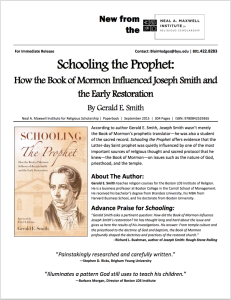Podcast: Download (13.8MB)
Subscribe: RSS
From the book: Of Faith and Reason: 80 Evidences Supporting the Prophet Joseph Smith
By Michael R. Ash
Critics of the Book of Mormon contend that not only were many Book of Mormon weapons unknown in early Mesoamerica, but that war itself was virtually unknown. Recent studies have shown otherwise. Howard La Fay of National Geographic writes:
“Gone forever is the image of the Maya as peaceful, rather primitive farmers practicing esoteric religious rites in the quiet of their jungles fastness. What emerges is a portrait of a vivid, warlike race, numerous beyond any previous estimate… And, like the Vikings half a world away, they traded and raided with zest….The Maya –so long portrayed as peaceful, devout people were involved in warfare from very early times”.
As for weapons being unknown in in pre-Columbian American, recent findings have proved the opposite. The bow for instance was in fact known in Mesoamerica by at least the first millennium BC, precisely as described in the Book of Mormon. The Aztecs used the macuahuitl, which was a long wooden shaft with large pieces of obsidian flakes fixed into its edges. One Mayan warrior is know to have cut the head of a Spaniard’s horse with one stroke of his macuahuitl, or what the Spanish called his “sword”.
Michael R. Ash is the author of: Of Faith and Reason: 80 Evidences Supporting The Prophet Joseph Smith. He is the owner and operator of MormonFortress.com and is on the management team for FairMormon. He has been published in Sunstone, Dialogue: A Journal of Mormon Thought, the Maxwell Institute’s FARMS Review, and is the author of Shaken Faith Syndrome: Strengthening One’s Testimony in the Face of Criticism and Doubt. He and his wife live in Ogden, Utah, and have three daughters.
Julianne Dehlin Hatton has worked as a News Director at an NPR affiliate, Television Host, and Airborne Traffic Reporter. She graduated with an MSSc from the Maxwell School of Citizenship and Public Affairs at Syracuse University in 2008. Julianne and her husband Thomas are the parents of four children.
Music for Faith and Reason is provided by Arthur Hatton.








